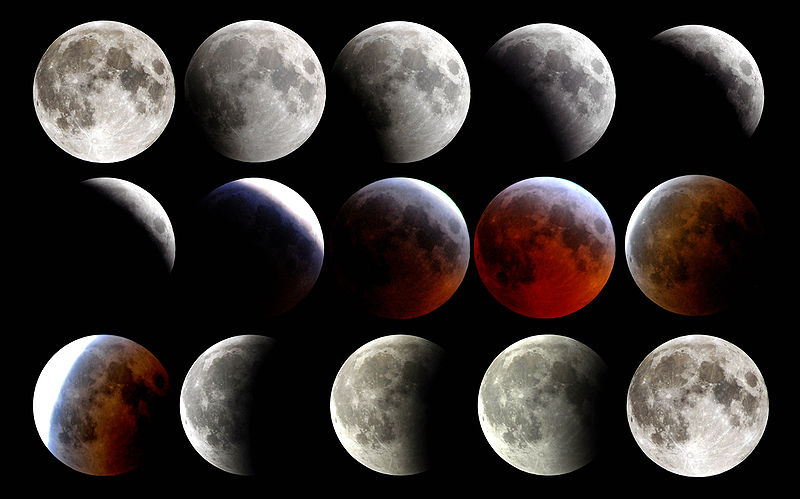
A lunar eclipse takes place when the sun, Earth and moon line up in space. The moon passes through Earth’s shadow. (Wikimedia Commons)
During a lunar eclipse, the Earth’s shadow creeps across the moon’s face. The shadow will appear dark, like a bite taken out of a cookie, until the shadow completely covers the moon. During a total lunar eclipse, the Earth lies directly between the sun and the moon, causing the Earth to cast its shadow on the moon. If Earth didn’t have an atmosphere, then, when the moon was entirely within Earth’s shadow, the moon would would appear black and invisible. During a total lunar eclipse, when the moon is submerged in Earth’s shadow, there is circular ring around Earth, the ring of our atmosphere which extends 50 miles about the Eath's surface, through which the sun’s rays pass. As sunlight passes through our atmosphere, the green to violet portion of the light spectrum is, essentially, filtered out.
The reddish portion of the light that is least affected is bent (refracted) toward the Earth’s surface when it first enters the atmosphere. It’s bent again when it exits on the other side of Earth. This double bending sends the reddish light onto the moon during a total lunar eclipse. Depending on the conditions of our atmosphere at the time of the eclipse (dust, humidity, temperature and so on can all make a difference), the surviving light will illuminate the moon with a color that ranges from copper-colored to deep red. (In December 1992, not long after the eruption of Mount Pinatubo in the Philippines, there was so much dust in Earth’s atmosphere that the totally eclipsed moon could barely be seen.)
 |
| Lunar eclipse of March 3, 2007. Image by Joshua Valcarcel via Wikimedia Commons. |
 |
| Photo of red moon morning of April 15, 2014 from Appleton, WI. |

No comments:
Post a Comment